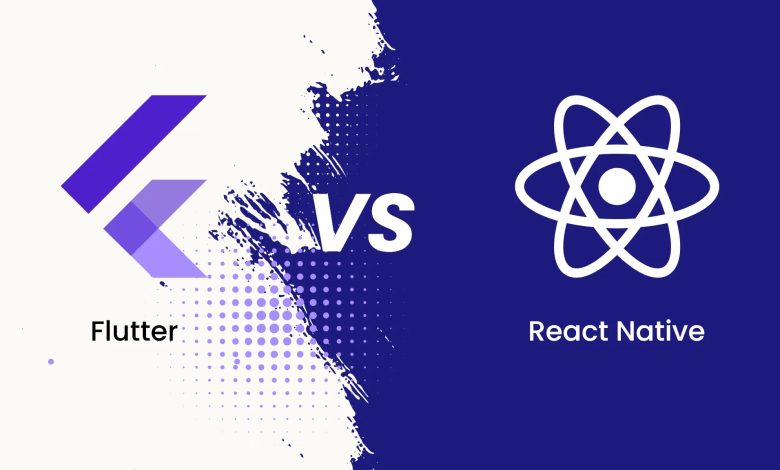Hybrid App Development: Flutter vs. React Native

In the fast-paced world of mobile development, companies and developers are constantly seeking ways to reduce costs, shorten time-to-market, and reach a wider audience. Hybrid app development frameworks have emerged as a powerful solution, enabling developers to build apps for both Android and iOS using a single codebase.
Among the many hybrid frameworks available, Flutter and React Native stand out as the most popular in 2025. Both have passionate communities, strong corporate backing (Google for Flutter, Meta for React Native), and proven track records in powering some of the world’s most widely used apps.
But which one should you choose for your next project? Let’s dive deep into the Flutter vs. React Native debate.
What is Hybrid App Development?
Hybrid app development allows developers to write one codebase that runs across multiple platforms (Android, iOS, and sometimes web/desktop). This approach offers:
- Reduced development time and costs
- Easier maintenance
- Faster updates and deployment
- Consistent user experience across platforms
However, the trade-off often lies in performance and native feature access, which differ depending on the framework.
Overview of Flutter
Released by Google in 2017, Flutter is a UI toolkit for building cross-platform apps using the Dart programming language. Instead of relying on native UI components, Flutter uses its own rendering engine to draw widgets directly on the screen.
Key Strengths of Flutter:
- Hot Reload: Fast testing and iteration.
- Customizable Widgets: Beautiful, pixel-perfect UIs.
- Performance: Almost native-level performance thanks to its rendering engine.
- Cross-Platform Reach: Supports Android, iOS, Web, Windows, macOS, and Linux.
- Strong Ecosystem: Backed by Google and growing rapidly.
Overview of React Native
Developed by Facebook (Meta) in 2015, React Native allows developers to build apps using JavaScript or TypeScript, leveraging the popular React library. Unlike Flutter, it uses native components for rendering, bridging between JavaScript and native code.
Key Strengths of React Native:
- JavaScript Ecosystem: Millions of developers already know JS/React.
- Large Community: Extensive third-party libraries and plugins.
- Native Feel: Uses actual native components for UI.
- Flexibility: Easy integration with existing native projects.
- Proven Track Record: Powers apps like Instagram, Facebook, and Airbnb.
Flutter vs. React Native: Side-by-Side Comparison
| Feature | Flutter | React Native |
|---|---|---|
| Language | Dart | JavaScript / TypeScript |
| UI Rendering | Custom rendering engine (Skia) | Native components + JavaScript bridge |
| Performance | Very close to native | Good, but sometimes slower due to bridge |
| Learning Curve | Steeper (Dart is less common) | Easier (JavaScript is widely known) |
| Ecosystem | Growing rapidly, strong Google support | Mature, massive JS ecosystem |
| Cross-Platform Reach | Mobile + Web + Desktop | Mainly mobile, experimental web/desktop |
| Hot Reload | Yes | Yes |
| Community | Smaller but growing fast | Large, well-established |
| Best For | Custom UIs, startups, multi-platform | Fast MVPs, JS-heavy teams, native feel |
Use Cases: When to Choose Flutter
- Startups and SMEs wanting to build cross-platform apps quickly.
- Apps requiring highly custom UI/animations.
- Projects aiming to launch on mobile + web + desktop with one codebase.
- Teams comfortable learning Dart.
Examples of Apps Built with Flutter:
- Google Ads
- Alibaba
- Reflectly
- BMW
Use Cases: When to Choose React Native
- Teams with strong JavaScript/React expertise.
- Apps needing native-like look and feel.
- Projects requiring heavy integration with existing native code.
- Enterprises relying on mature ecosystems.
Examples of Apps Built with React Native:
- Bloomberg
- Discord
Performance Considerations
- Flutter often wins in terms of raw performance, thanks to its rendering engine that bypasses the JavaScript bridge. This results in smoother animations and faster load times, especially for complex UIs.
- React Native can occasionally suffer from performance bottlenecks due to its reliance on the bridge between JavaScript and native code. However, newer improvements (like Fabric architecture and JSI) are reducing these issues.
Developer Experience
- Flutter provides a rich set of ready-to-use widgets and predictable UI design, but learning Dart may feel like an extra barrier for some developers.
- React Native benefits from the massive JavaScript ecosystem, meaning developers can easily leverage existing React libraries. However, third-party dependency quality can vary.
Community & Ecosystem
- Flutter’s community is growing rapidly, especially with strong Google support and events like Flutter Engage.
- React Native’s community is larger, older, and backed by thousands of contributors, meaning more resources, tutorials, and open-source plugins.
Cost and Time Efficiency
Both frameworks save significant time compared to native development. However:
- Flutter often speeds up UI-heavy apps since everything is built with widgets.
- React Native may be faster if your team already knows JavaScript.
The Future of Flutter and React Native
- Flutter is rapidly expanding beyond mobile, with strong momentum in desktop and web apps. Its goal is to be a truly “universal” framework.
- React Native continues to evolve, focusing on performance improvements and deeper native integration, making it a safer choice for long-term enterprise apps.
Conclusion
Choosing between Flutter and React Native depends on your project needs, team skills, and long-term vision.
- Go with Flutter if you want: blazing performance, stunning custom UIs, and multi-platform reach.
- Stick with React Native if your team already has strong JavaScript/React knowledge and you want a mature, battle-tested ecosystem.
In 2025, both frameworks remain excellent choices for hybrid app development. The “better” option ultimately depends on what you value more: performance and UI flexibility (Flutter) or ecosystem maturity and developer familiarity (React Native).

